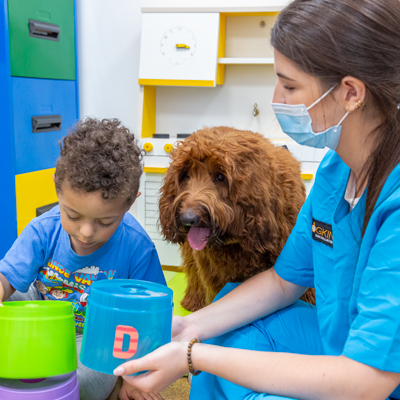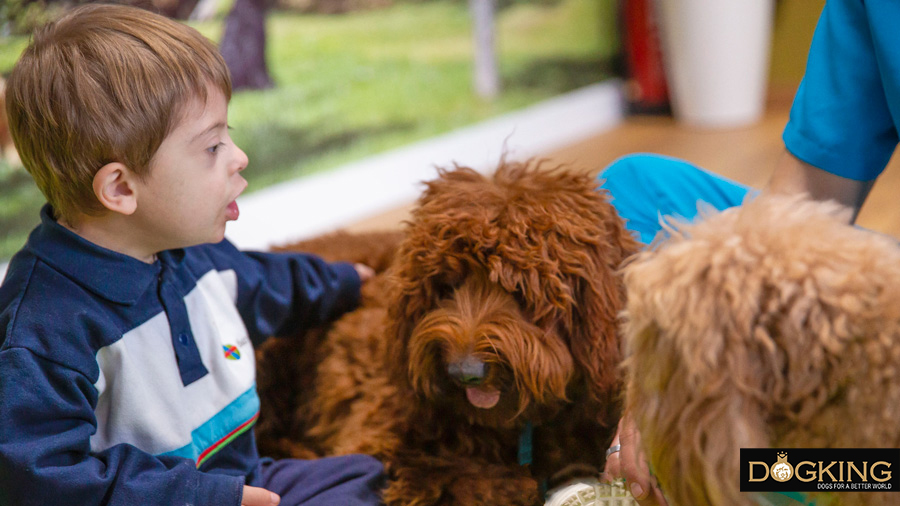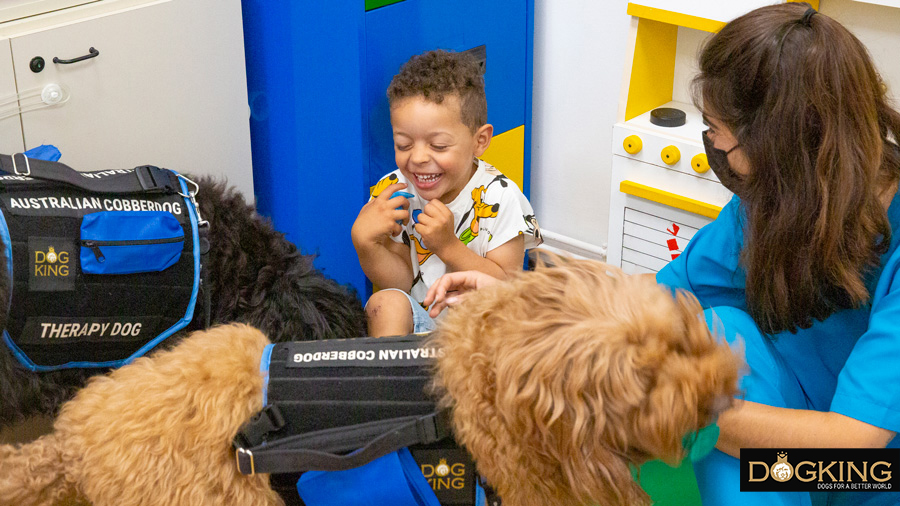Why Australian Cobberdogs are hypoallergenic
The non-shedding dog breed and dandruff-free par excellence

THE PIONEER THERAPY BREED IN THE WORLD OF ALLERGIES
Reading time about 7 minutes
About 10% of the world’s population is allergic to dogs. At the same time, 14% of abandoned dogs are due to allergic problems. At DOGKING we believe that everyone has the right to enjoy the love of a dog, just as every dog deserves to know what it is to have a home. Therefore our commitment to raising awareness of Australian Cobberdogs, a hypoallergenic breed that has even connected with people whose immune systems are more sensitized to canines. However, what is it that makes this possible?

Table of Contents
Dog allergy: what is the cause?
Although it is commonly thought that dog allergy is caused by its hair, it is because the allergic person has developed a hypersensitivity to a protein found in the dandruff and excoriations on the dog's skin, produced by the sebaceous glands and the saliva.These particles are impregnated wherever our dog passes through, remaining in the air, objects, or even on people's skin or clothing. Even though a dog isn’t in the same place as us, we may have allergy symptoms if it has been there before. This effect is exacerbated when the dog licks itself, since the amount of allergen will be greater in its coat. In addition, if it is a dog that sheds or loses its hair frequently, there will be a greater chance that a sensitized person may suffer an outbreak. Not only because it will be leaving hairs with the potentially allergic protein all over the place, but also because the shedding will result in flakes containing the same substance.
The Australian Cobberdog and its hypoallergenic power
The main reason for this is that the coat of these dogs doesn’t shed or lose hair and (except for some unusual dermatological problem specifying the contrary) doesn’t present dandruff either. This promotes that the protein that in most dogs would remain impregnated in their hair and dermal flakes, in the case of the Australian Cobberdog doesn’t spread and, therefore, doesn’t cause allergic symptomatology. At the same time, the percentage of people who are allergic to the saliva of these dogs is still very low. Since not all people are the same, they won’t respond in the same way to certain factors, and there is no dog that is universally hypoallergenic as a result. But what is clear is that Australian Cobberdogs have helped many people, families, and patients to enjoy the company of a dog. A companionship they previously thought impossible due to their allergic condition.
The breed as a hypoallergenic guarantee
The Australian Cobberdog standard is based on two pillars: temperament suitable for being a therapy and assistance dog and having a hypoallergenic coat that doesn’t shed. The aim is to preserve the essence, excellence and authenticity of the breed, so that the Australian Cobberdog is and remains the balanced and healthy dog we know today, and can continue to help thousands of people.
At DOGKING, we take care and preserve the DNA sequence of the breed following the MDBA standards, which is why we use the breed for the purpose for which it is selected for therapy, carrying out the same in hospitals and associations for people with special needs.
